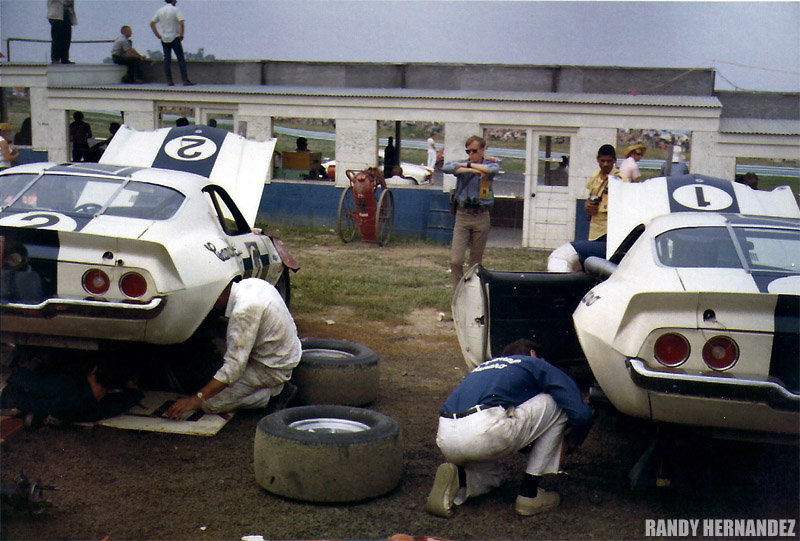-
Administrator

Heading into the 1970 Trans-Am season, many predicted the new Chaparral built and run Camaros were going to be the dominant force. Think about this for a minute: Camaro had won the Trans-Am series in both 1968 and 1969. Both seasons, Penske racing were the factory team.
But the brilliant Jim Hall was a bigger name than Roger Penske in the late 1960s. His amazing creative Chaparral sports cars were absolutely cutting edge. Chaparral had been a top campaigner in the SCCA Can-Am series since its inception, introducing several ground-breaking designs that would be copied by others in years to come. In addition, Hall's Chaparral machines had been front runners in the World Endurance Championship in 1966 and '67. Hall even owned his own race track!
Although Chaparral would be running the new 2nd generation Camaros in 1970, many of the changes from gen 1 to gen 2 were on the surface. Underneath, the gen 2 model has a few advantages over the gen 1 cars, but its successes from 1969 should have carried over.
And so, combining the dominance shown by Camaro in the last two years, with the brilliance of Jim Hall, this was a sure-bet. But the season didn't transpire that way at all.
The two beautiful white Chaparral Camaros, with their single metallic Navy blue stripe running down the centre and Chevy bowtie emblems as the background for the door numbers, looked a million bucks. They were well built, featuring typical forward thinking design. But Chaparral were new to the Trans-Am series. The competition were even better prepared.
The two Chaparral Camaros, driven by Hall himself, and Ed Leslie, were among the best handling, best stopping cars on the grid. But they lacked power. Chaparral chose to build their motors in-house. Penske, on the other hand, had Traco build their engines, and they were considered the most powerful in 1967 and '68, and were on a par with the Ford motors of '69. Traco were well versed on the small block Chevy, and they knew all the secrets, such as the trick of breaking in a new motor, then fitting it with brand new heads.
In addition, Smokey Yunick, who was contracted by GM in a development role, created some impressive new slant plug heads, which were expected to produce good power. But the SCCA didn't allow these heads to be used.
From the 11 race series, Chaparral claimed just one victory, here at Watkins Glen. By this stage, Hall himself had retired as a driver, and plugged Vic Elford into his car. Hall hadn't raced since his violent somersault in a Can-Am car in 1968, and never really got comfortable in the Camaro.
Elford was running in about 4th or 5th spot throughout the early part of the race, but when the heavens opened, the brilliant handling of his Camaro allowed him to push through to the front, and even though the track dried late in the race, he took the victory.
Amazingly, even though Chaparral were the factory Chevy team, it was actually another team that took the first victory of 1970 for Camaro: the privateer Roy Woods outfit, whose American Racing Associates (ARA) ran a pair of 1969 Camaros, one of which was an ex-Penske car. With this, Milt Minter won at Donnebrook.

 Posting Permissions
Posting Permissions
- You may not post new threads
- You may not post replies
- You may not post attachments
- You may not edit your posts
-
Forum Rules







 Reply With Quote
Reply With Quote